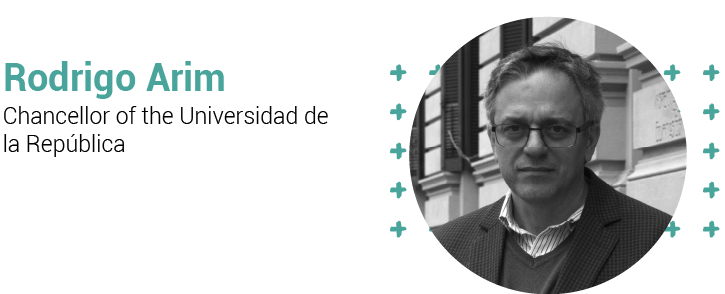
Member of the Board of Directors of the Fundación Ceibal.
The date 13 March 2020 will be remembered for the confirmation of the first cases of COVID-19 and the start of a national quest to address a highly complex situation with diverse social aspects. Public policies and educational institutions were stretched to the limit, necessitating responses within a limited time frame, with partial information and without knowing substantial aspects about possible scenarios of how the epidemic would develop.
In the field of tertiary education, the Universidad de la República’s 140,000 students and 16,000 staff distributed throughout the country had to swiftly migrate their roles online. There were evident risks. Unlike in other levels of teaching, higher education institutes concentrate people from different parts of the country, and national and international mobility is one of its distinctive aspects. It is no coincidence that with the threat of the epidemic, universities all over the world cancelled in-person activities in a higher proportion than other public and private institutions. Even in countries with more relaxed approaches to the limitation of in-person activities, universities suspended normal operations. One pragmatic case was Sweden, which at the centre of the epidemic kept all its institutions open to in-person work, except for education for students aged 16 or older. The risk of becoming a factor in the expansion of the epidemic is clear, as has been seen again in the circumstances that universities in the developed world are undergoing in this second half of 2020, with systematic outbreaks and the consolidation of new waves of the disease.
In higher education, social contact and permanent exchange are not decorative ingredients or accessories. In some areas—clinical or experimental formation, interaction with biological systems—they are essential. Part of these educational activities had to be postponed. But a central core of educational activities was formed on the basis of virtual platforms and the reconfiguration of educational practices. At the Universidad de la República, over 2700 courses migrated to this modality, while a little over 100 could not be implemented. Around 85 percent of the students registered in the first semester of the degree—from an intake of 18,500 students—remained active and connected to their courses. It is to be expected that the academic results will not be comparable to those obtained in “normal” years, but these efforts allowed the university community to remain active, in communication with each other and functioning, in particular in the educational dimension.
The new educational scenarios constitute responses to the emergency, but also processes of individual and institutional learning. While courses migrated online, the way of learning changed. Less protected by everyday life within the university, students had to develop more autonomy and capacity for following with a lesser degree of directed orientation. Teachers developed novel teaching strategies, with specially-designed materials and approaches that did not resort necessarily to maintaining lecture-style classes in online contexts. The experience also generated inequalities. Those students with greater prior deficits of academic accumulation, from family backgrounds where the option of distance learning does not have a suitably developed environment, and with difficulties to adapt to more demanding modalities obtained less promising results. Social ties in in-person learning are by themselves important anchors for continued education.
It is from this perspective of heterogeneous and unequal results that we should consider the new instruments for a future that will not be a repeat of the past. Those instruments, in a context of suitable monitoring, are themselves a democratizing factor of advanced knowledge. By themselves, without the complement of teaching, they will not bear reasonable results. Changing the model in tertiary education will mean combining the best of in-person learning with the opportunities that online learning opens up.
